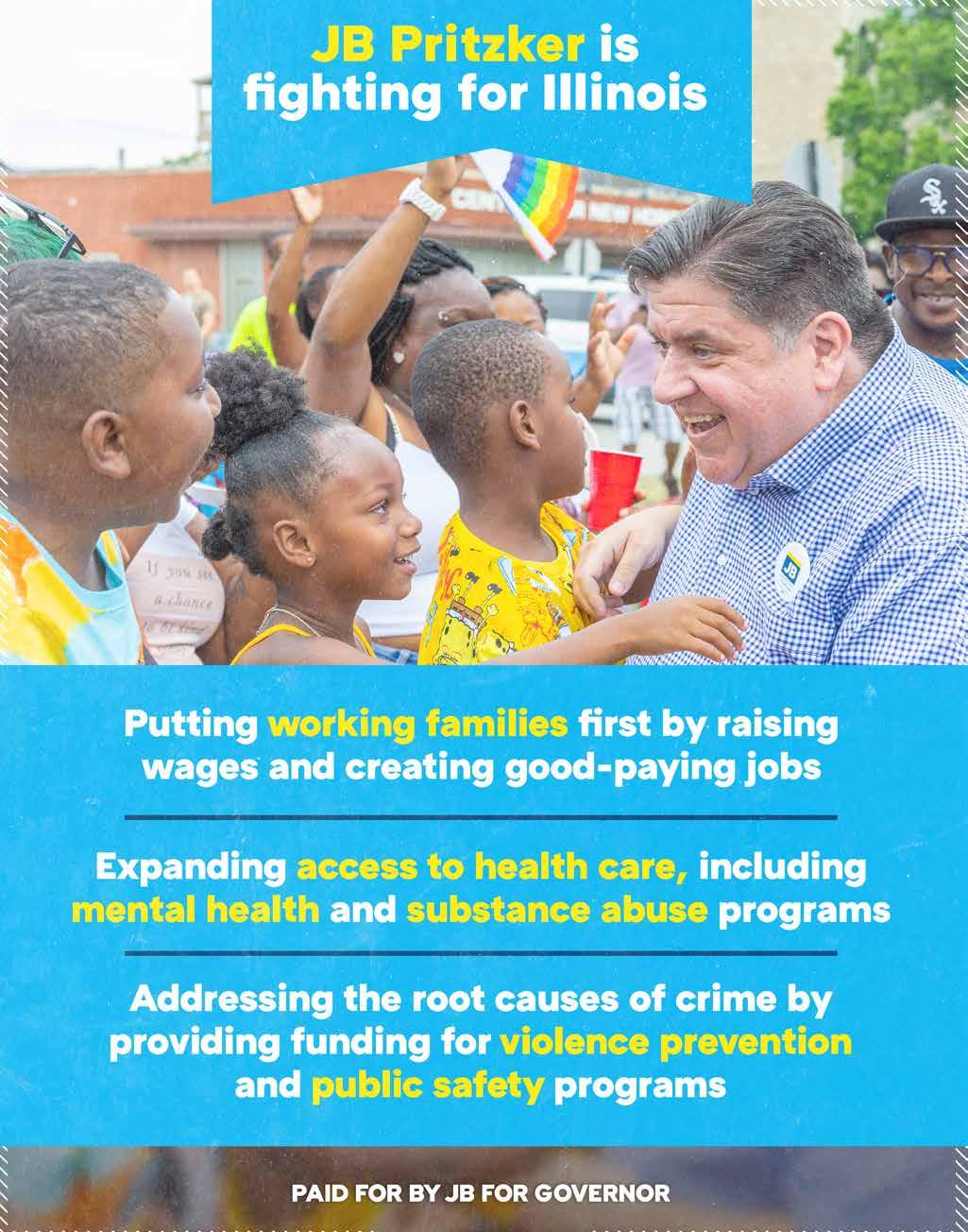




Currently, seven states have passed legislation to prevent the teaching of Critical Race Theory (CRT) in schools, and 16 have legislation moving in that direction. This ban blocks educators from teaching about the roots of racism in Western society, generally, and in the United States, spe cifically, and most importantly, how racism continues to scourge us. Some states are trying to ban the use of the 1619 Project, as well.

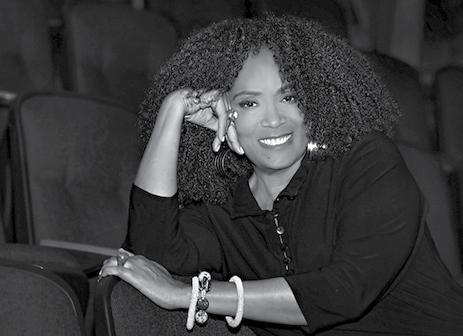
This, is what these white racists want to do.
As responsible people we cannot allow this country or anyone else to deny our history. As people of African descent, we have the right to know our history in the Americas.
The distortions and omissions of truth are great. We were here before Columbus and contributed to the growth and advance ment of civilization. Others of us arrived on ships and were en slaved to carry out the work of the newly freed indentured servants from Europe who were sent over to the “new world” to settle the newly captured territories in the Americas and elsewhere. What they failed to report is that the British used parts of North America as a penal colony. Convicts would be transported by private companies and sold by auction to plantation owners. About 50,000 British con victs were sent to colonial America. This was about one quarter of British settlers during the 1700s. These same groups of indentured servants and convicts are the folks who revolted against the British redcoats to take over the new land and become the landowners. It represented a new start for them, a start that would never happen in Britain. So, they seized the opportunity.
Here’s my point, they don’t ever discuss that aspect in the class room because then we’d have to take a serious look at who are these people with whom we live among, evolved and emerged from? You know how old school Blacks always ask, “who’s your people?” Why? Because it tells a story about who you are, and mostly what manner of people you are.
Look, the original aristocrats who stole the land from the native people who welcomed them with hospitality really didn’t want to rough it and do what they’d have to do eventually to resume the advanced lifestyle that they had in England. They put plantation property managers, overseers and others in place to manage the ag ricultural responsibilities of cotton, rice, sugar, and tobacco. These people were not cultured or educated, and most were illiterate and many were Scottish or Irish.
These land managers experienced a taste of the life their masters lived, and of course, they wanted that. And thus came the American Revolution of 1776. The colony won and broke direct ties with En gland as its mother country. They took advantage of the slave trade realizing that it created the opportunity for them to acquire wealth and advance their station in life. Slavery provided them FREE Labor.
So, the Civil War was all about maintaining their newfound power-that of the new landlord who had watched and experienced the disproportionate distribution of wealth in their original motherland. They never wanted to be subservient to anyone again. The acquisi tion of land and wealth was key. Slavery gave it to them on a silver platter. Holding on to their advantage meant their future was se cured.
But the North won the war and the South under the leadership of the Confederates lost, leaving them to follow suit of Lincoln’s way. Emancipation for the Africans who they held as slaves was not on their agenda.
FACT: Frederick Douglass told Lincoln, ‘The South will always be more powerful than the North because they have free labor called slaves.’ Lincoln heard the truth in Douglass’s words and therefore, fought to emancipate the Africans.
What we see now is the very real move to return to serfdom where the rich own all the land, commodities, even air and water. The goal is to eliminate unions because they protect the interests of workers, the people. The nouveau riche, want to have you work their land and businesses so that they can tell you when to work, how long and what they will pay you. The handwriting is on the wall.
So, pay attention and ask the essential question, who’s your people? Indentured servants and convicts?
That’s right . . . those who inherited America represented Britain’s great bowel movement.
They were men who lacked integrity and passed low levels of char acter on from one generation to the next. They don’t want that truth, their history, revealed. So, they work hard to suppress the truth, the motive behind the legislation to keep Critical Race Theory out of the school curriculums.
there is always a new low for Trump Republicans. And that is pretty frightening.
Take the latest exercise in lawlessness, dishonesty, and cruelty from Florida Gov. Ron DeSantis. He chartered a plane to send dozens of mostly Venezuelan asylum seekers from Texas to Martha’s Vineyard, an island community off the coast of Cape Cod in Massachusetts. He clearly was gleeful about the idea of sticking it to liberals and gloating about it on right-wing media.
It wasn’t even an original idea. Texas Gov. Greg Abbott had already been putting migrants on buses to cities like Wash., D.C., where they have been dropped off in front of Fox News and outside the Vice President’s residence—a giveaway that the purpose is publicity.
The news of the DeSantis flight made it clear that he was exploiting vulnerable people for his own political advantage. And the more we learn, the worse it gets.
A lawsuit filed on behalf of people deceived into taking the flight says the migrants were approached in San Antonio by people pretending to offer humanitarian assistance. They were promised that jobs, housing, and other assistance were waiting for them if they were willing to get on a plane.
None of it was true. These vulnerable people were re portedly told lies about where they were going and given brochures with false information about help that would be waiting for them. Even worse, they may have unknowingly threatened their asylum claims by making it likely that they
would miss court appointments scheduled far from where they had been flown.
DeSantis and his henchmen hadn’t contacted government officials or nonprofit organizations in Massachusetts. It was a photo op. It was definitely political. And it was possibly illegal. The sheriff in Bexar County, Texas, has opened a criminal investigation into the false pretenses under which people were lured onto the planes. A lawsuit has been filed on the migrants’ behalf.
White House Press Secretary Karine Jean-Pierre slammed DeSantis for “alerting Fox News and not city or state offi cials about a plan to abandon children fleeing communism,” calling it “a cruel, premeditated political stunt.”
Of course, it’s not the first time that dishonorable politi cians have exploited vulnerable people. In fact, racist white southerners who were resisting segregation in the early 1960s did almost the same thing to Black Americans 60 years ago.
The Washington Post recently highlighted that history. A group of segregationists organized “Reverse Freedom Rides” in 1962 as retaliation for the Freedom Rides that carried civil rights activists throughout the South in 1961.
According to the Post, “The plot was organized by white supremacist Citizens’ Councils in Arkansas, who bought radio ads and made fliers advertising the ‘opportunity’ to African Americans.” One Arkansas woman and nine of her children were dropped off on Cape Cod near the Kennedy
Building stable sources of income continues to be one of the greatest challenges nonprofits face. Grants from foundations or governments can fall short of meet ing the financial needs of a nonprofit organization. One possibility a nonprofit organization can consider is looking at ways to increase additional revenue by creating a social enterprise entity. What are social enterprises, and how do nonprofits benefit from establishing them?
Social enterprises are built to create additional revenue for a business and can be profit or nonprofit organizations that have similar tax and legal structures. Social enterprises are created to solve various social issues through their products or services. Social enterprises are innovative entities with multiple models whose purpose lies within the heart of an indi vidual or organization. These enterprises use business tools to address social needs within a community.
Nonprofits often consider establishing a social enterprise goal to help create income through products or services connected to the organization’s social mission. It is important to note that social enterprises are not legal structures but are instead created based on ide ologies aimed at a common goal. The main goal for establishing a social enterprise should be to increase financial health and create a sustainable source of income for its members.
While there are a number of successful social enterprises, there are three that have partic ularly proven to be viable. They are (1) fee for service, (2) products and (3) the marketplace.
Fee for Service: This social enterprise model is established to assist an organization in generating additional revenue to cover its expenses. The fee-for-service model often en tails unrestricted finances that can provide leverage, given an organization’s ability to use income generated to pay direct costs not usually paid through grants or from foundations.
family’s compound because she had been falsely told that Kennedy was going to greet them.
Last year, journalist Adam Serwer published a book called “The Cruelty is the Point: The Past, Present, and Future of Trump’s America.” Serw er has made the point that Trump is a symptom, not the cause, of a cruel streak in American pol itics. There is a long history of backlash against progress, going back to the post-Reconstruction period in which white supremacists used violence to reverse the enfranchisement of Black people.
DeSantis’s scheme to deceive, manipulate, and harm vulnerable people seeking asylum in our country is evidence that the cruelty wielded by Trump and embraced by so many of his followers will continue to poison our politics if Trump or DeSantis or someone of their ilk is the Republi can presidential nominee in 2024.
Recognizing this truth is important to understanding the work we have ahead of us. We must also recognize that the cruelty in our past and our present is not our whole story.
Our story also includes good people in Hyannis in the 1960s and in Martha’s Vineyard this year who responded by mobilizing to welcome and support the arrivals. It includes the people of all colors and faiths who have repeatedly built movements to expand civil rights and promote human dignity, and who have given their time and treasure to elect political leaders who appeal to our national ideals rather than trash them.
We should be outraged at the cruelty displayed by some of our leaders. Let us also be motivated, and optimistic, that we can out-organize and overcome them.
Ben Jealous serves as president of People For the American Way and Pro fessor of the Practice at the University of Pennsylvania. A New York Times best-selling author, his next book “Never Forget Our People Were Always Free”will be published by Harper Collins in December 2022.

For example, some of these direct costs might pay wages for accounting staff who are not often asso ciated with work in direct services and who it is often impermissible to pay through a foundation or some government awards. When establishing a fee-for-services model, the fee must be less than a profit group would charge, and the fee has to be associated with the organization’s mission.
Products: These are tangible commodities that can address a market gap locally. At the start of my nonprofit career as part of a board of direc tors, my organization created a product that could be sold to the community and employed individuals within its program. In essence, when launching a product type, social enterprises can have a two-fold benefit. First, the product sold is a tangible commodity. Secondly, the product creates viable employment oppor tunities for the residents where an organization is based or for the organization’s clients. Examples of merchandizing opportunities can be an on-site coffee shop or a business mak ing memorable pendants that denote the organization’s mission.
Marketplace Business: These social enterprises often match products and services with buyers. For buyers, the products or services are free. However, producers or establishers are likely to be charged a fee to help support the nonprofit’s mission. Some marketplace businesses have been launched to offer various trainings geared to assist a nonprofit entity whose mission they are connected with to become effective. Marketplace businesses will often charge a small fee to offset their operational cost.
These are the three possible social enterprises mentioned in this brief article—they are not an exhaustive list of possibilities to be considered when establishing a social enterprise.
One advantage of creating a social enterprise is raising capital. Social enterprises inspire and develop innovative solutions, help implement social change, and provide employment for consumers or residents.
However, there are also disadvantages to keep in mind, such as strict rules and regulations, when a social enterprise competes with commercial businesses. In addition, any entity must be aware of any tax ramifications and seek legal advice before launching.
No doubt, social enterprises can be great for nonprofits seeking to create unrestricted reve nue streams. In any case, establishing a social enterprise lies at the heart of an organization’s mission and should be considered—but always do your homework before establishing one.
Dr. Sanja Rickette Stinson is the Founding CEO of Matthew House Chicago, and is an award winning author, speaker and coach. You can reach her at sanja@drsanja.com.

When adult use rec reational sales began in Illinois entrepre neurs Reese Xavier; CEO of HT23
Growers eagerly prepared to take ad vantage of social equity inclusions of the historic legislation. Goals of gener ating generational wealth in one of the industries least tax friendly states may seem like a pipe dream. Yet, license recipients believe there is space in the industry for them and they are looking for financial resources as federal le galization and other trailer bills slowly evolve.
Governments have benefited from millions of dollars in new cannabis tax revenue. In 2020, entrepreneurs and community advocates were eager to ac cess the funds allocated for social equi ty. The state has been transparent with how they are using those funds but this transparency isn’t shared across all lev els of government.
In FY 2022 the City of Chicago earned a little over $60 million in can nabis tax revenue yet there’s no public information on the allocation of tax dollars.
Evanston on the other hand boldly directed theirs towards reparations. A fund created in 2019 pledged to disburse ~ $10 million dollars over ten years to eligible direct survivors of redlining and other discriminato ry city housing practices.
However, the absence of retailers is contributing to low tax revenue from legal marijuana sales compromising their reparations fund.
Illinois needs to reflect on goals of its tax revenue and pre pare for threats to those goals. Shrinking tax revenue can be influenced by other factors.
Tax collections fell this year in “California, Colorado, Ne vada, Oregon and Washington after years of strong growth” stated by Richard C. Auxier, a voice of the Tax Policy Center of the Urban Institute and Brookings Institution in an in dustry blog post.
Revenue generated from cannabis tax is significant, de clines albeit expected due to market forces, should be prepared for. Out-of-state sales make up between 25%-30% of Illinois’ revenue according to IDFPR’s monthly sales figures. It is clear Illinois enjoys the ben efits of cannabis tourism with some of those sales be ing because it is illegal in states like Indiana.
President Biden’s recent pardons were buttressed by a plea to governors to support expungement for so cial equity and addressing cannabis’ classification in the Controlled Substance Act. The industry perceives this as a move towards federal legalization.
Gov. Eric Holocomb, a staunch Republican has stated descheduling would have to happen at the federal level before he would approve any marijuana legalization in Indiana.
Cannabis is a major talking point on campaign trails. Hope fuls boast about financial benefits for behavioral health, law enforcement and violence prevention, others advocate for directing funds towards substance abuse education, school funding and even environmental restoration.
Michigan commenters on Reddit, a popular social media site shared “I love all the tax revenue coming in for the state! Let’s hope more and more people start smoking marijuana!”
While an Illinoians had a slightly different take on their market, “The taxes are out of control in Illinois they need to get realistic” they said.

First a portion of revenue goes towards offsetting ad ministrative costs, monies are deposited into the Cannabis
Regulation Fund and paid for im plementation, administration and enforcement.
“IDFPR is currently focused on taking the next steps for Illinois’ adult use cannabis industry, and we are excited to have Vaughn Bentley at the helm in the role of interim deputy director of can nabis control until a permanent deputy director is named” - Chris topher Slaby, IDFPR
Next monies are appropriated to state courts, Illinois Attorney General, Civil Legal Aid, State Police through the Cannabis Ex pungement Fund and then direct ed towards the following areas:
2% for drug treatment 8% for crime prevention 25% for the R3 program 20% for substance abuse and mental health 10% to the Budget Stabiliza tion Fund
35% to the General Revenue Fund
“I’m not a fan of the current funding model” stated cannabis consultant and Executive Direc tor of Northstar Minority Canna bis Association Neffer Kerr.
“The 5 main areas of funding focus are civic legal aid, eco nomic development, reentry, violence prevention, and youth development. We already have dollars going to organizations that already do that” she continued.
The state recently announced $45M in grant funding for 148 projects through the Restore, Reinvest and Renew (R3) program.
“I think there should be funds from the cannabis taxes to go directly to businesses” said craft grow license recipient Reese Xvaiver, “crime reduction is great, but is that money enough to really help the people who need it the most” he questions.
Xavier is right to reflect on if the investments are enough, there is so much work to be done at city, county and state levels that the projects themselves and the stakeholder sup port they provide are part of long term efforts in disproportionately impacted areas. With the city of Chicago for example losing 30% of its Black population in the past 30 years, many from the same DIA’s millions of dollars entering communi ties can be useful for slowing that loss.
Out-of-state sales make up between 25%-30% of Illinois’ revenue according to IDFPR’s monthly sales figures. It is clear Illinois enjoys the benefits of cannabis tourism with some of those sales being because it is illegal in states like Indiana.
Municipal and county tax revenue allocation arguably is where there is a bottleneck of resourc es for communities and budding businesses. Cook County has the largest population of African Americans in a county in the nation, and Chicago is one of the most segregated cities in America for Black people. These two bodies of government have not been transparent in their allocation of
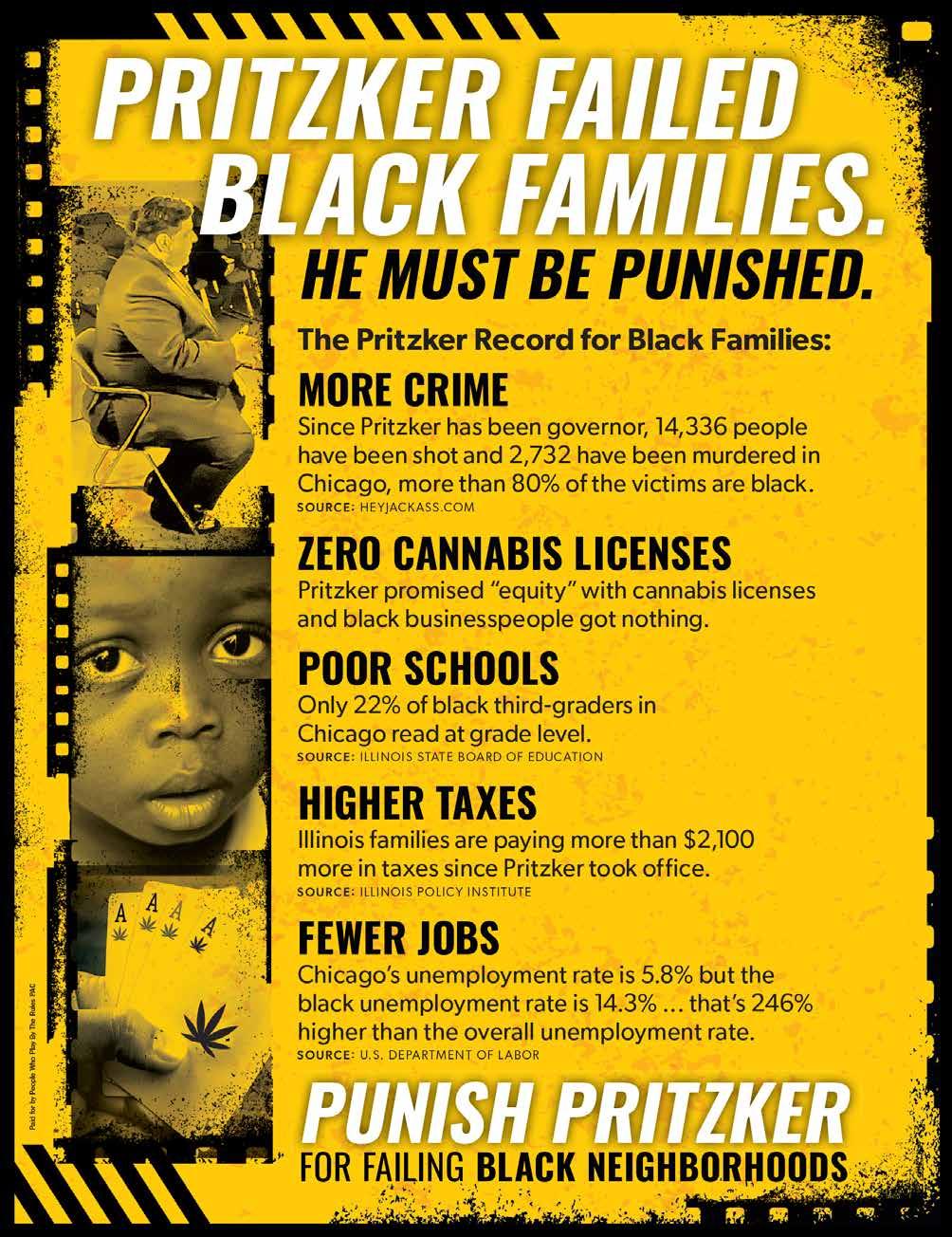
tax revenue for the benefit of social equity entrepreneurs or DIA”s.
Internally we see that there are kinks in the links of Illinois cannabis legislation, in this fluid political landscape competi tion exists even at the state level. With Indiana being slow to legalize, Illinois’ closest competitor is the state of Michigan.
When responding to a thread on Michigan making money off of Ohio residents one Reddit commenter published, “ I would love to spend my money locally but it appears our state politicians hate money”.
Being a legal state adjacent to an illegal state has financial benefits but “IDFPR only tracks adult use cannabis sales made to Illinois residents or out of state residents. IDFPR does not track sales to residents of individual states.” shares Christopher Slaby Chief Information Officer for IDFPR says.
“Imagine how much they must be making off those in Indi ana, especially at the border” wrote one commenter.
“Michigan is making money off of everyone weed-wise. Even people from Illinois, where weed is also legal, come to Michigan because it’s cheaper” wrote another.
Cheaper prices, lower taxes, broader selections and prox imity all come together to encourage consumers to choose to purchase cannabis at a particular location. As Illinois has committed to investments into social justice it is necessary to explore our closest competitor for retail sales and develop policies and programs for shifts in regional cannabis legis lation.
“Eventually, federal legalization will be a thing and SE en trepreneurs will have to compete with each other regardless. So it’s best to evolve business models with that in mind”ED Neffer Kerr.
2021 showed Michigan and Illinois as neck and neck with around $1.8 billion in combined medical and recreational sales. This past summer Michigan had 1,500 cannabis adult use businesses and Illinois was home to a fraction of that with 110 retail stores and 21 growers in operation.
When asked if HT23 was concerned with negative im
pacts of federal legalization Xavier responded, “no question canna bis being illegal in surrounding states benefits Illinois’s budget” he said, “but honestly my company isn’t concerned with emerging competi tion in the state or out of the state.
Despite the new ly awarded licenses and Illinois final ly having its first predominantly African Ameri can owned craft grower, consumer frustrations and closer high quality cheaper weed may very well fracture our tax investment model.
Cannabis revenue in Illinois currently generates a significant tax base for the economy. But as border states like Indiana consider entering the arena, that level of tax rvenue is in jeopardy for the long term.
Black communities have long been in need of capital, and the state has had to broker tax revenue to invest into commu nities. Despite the amount of money that is currently present it is unsure that those tax dollars will continue to grow.

The volatility of cannabis should concern all who are recip ients of tax dollars. Investments are sensitive to policies and social equity entrepreneurs already have a wealth of wor ries. “What they [social equity] should be concerned about is business banking challenges in this industry and the rules being changed about how capital can be received and raised,” shares Kerr.
Kerr believes tax dollars from cannabis should be directed towards cannabis education, workforce development, ancil lary business support, increased low interest rate business loans.
What’s apparent is that social equity entrepreneurs and communities in Illinois are digging in their heels to ensure their voices are heard. So what’s on the horizon for the Il linois industry as we creep closer to legalization…hopefully not just more tax revenue, but more jobs, more Black owners and operators and more focus on affordable banking solu tions.
Park Library 1605 N. Troy St.
Park Field House 1501 W. Randolph St.
Side Learning Center 4624 W. Madison St.
Park 6200 W. Bloomingdale Ave.
Kilbourn Park 3501 N. Kilbourn Ave.
Cragin Library 5108 W. Belmont Ave.
Park Library 1701 N. Milwaukee Ave.
Indian Center 3401 W. Ainslie St.
Student Center 750 S. Halsted St.
Northeastern Il University El Centro 3390 N. Avondale Ave.
West Belmont Library 3104 N. Narragansett Ave.
Chicago Library 4856 W. Chicago Ave.
Hiawatha Park 8029 W. Forest Preserve Dr.
Park Village Admin Bldg 5801 N. Pulaski Rd.
Woods Library 5630 N. Lincoln Ave.
Roden Library 6083 N. Northwest Hw.
Maggie Daley Park 337 E. Randolph St.
Lincoln Park Branch Library 1150 W. Fullerton Ave.
Merlo Library 644 W. Belmont Ave.
Chunk Nation 4732 N. Milwaukee Ave.
Truman College 1145 W. Wilson Ave.
Conrad Sulzer Library 4455 N. Lincoln Ave.
Broadway Armory 5917 N. Broadway
Willye B White Park 1610 W. Howard St.
Northtown Library 6800 N. Western Ave.

Everyone hates to think about it, but winter is just around the corner, and Chicago News Weekly wants you to be pre pared. The cold months can wreak havoc on your vehicle if you don’t take the right precautions.
Check your antifreeze levels frequently. Antifreeze helps regulate your car engine’s temperature. It keeps fluids in your engine system from boiling or freezing—both occur rences that could cause severe damage to several vehicle components. In the winter, your car has to contend with lower external temperatures, so it’s important to make sure your cooling system is up for the job.
Keep your windshield washer fluid topped off. Between the snow, salt, and slush, winter driving can be a messy business. You need to be able to clean your windshield constantly to avoid the consequences of driving with an obscured view.
Inspect your tires. Replace them if the treads are worn down to avoid losing traction on icy roads. Monitor your tire pressure closely. Drops in temperature may cause a loss of air pressure. Keep your tires aired up to prevent blow outs and other accidents.
Make sure your brakes are in good working order. They
need to be fully operational so you can navigate treacherous winter driving conditions as safe as possible. If you notice any potential problems with your braking system, get them taken care of before the seasons change.
Always carry a survival kit in your trunk. When you live in a cold climate like Chicago, it’s best to be prepared for the worst. Your kit should include spare winter clothes, emer gency flares and/or an SOS strobe, jumper cables, a shovel, safety absorbent or kitty litter (for traction), and anything
else that might come in handy when you’re stranded in sub-zero temperatures. If your car breaks down some where, having a survival kit just might save your life.
If you heed all of this advice, you and your vehicle should make it through the winter in prime condition.
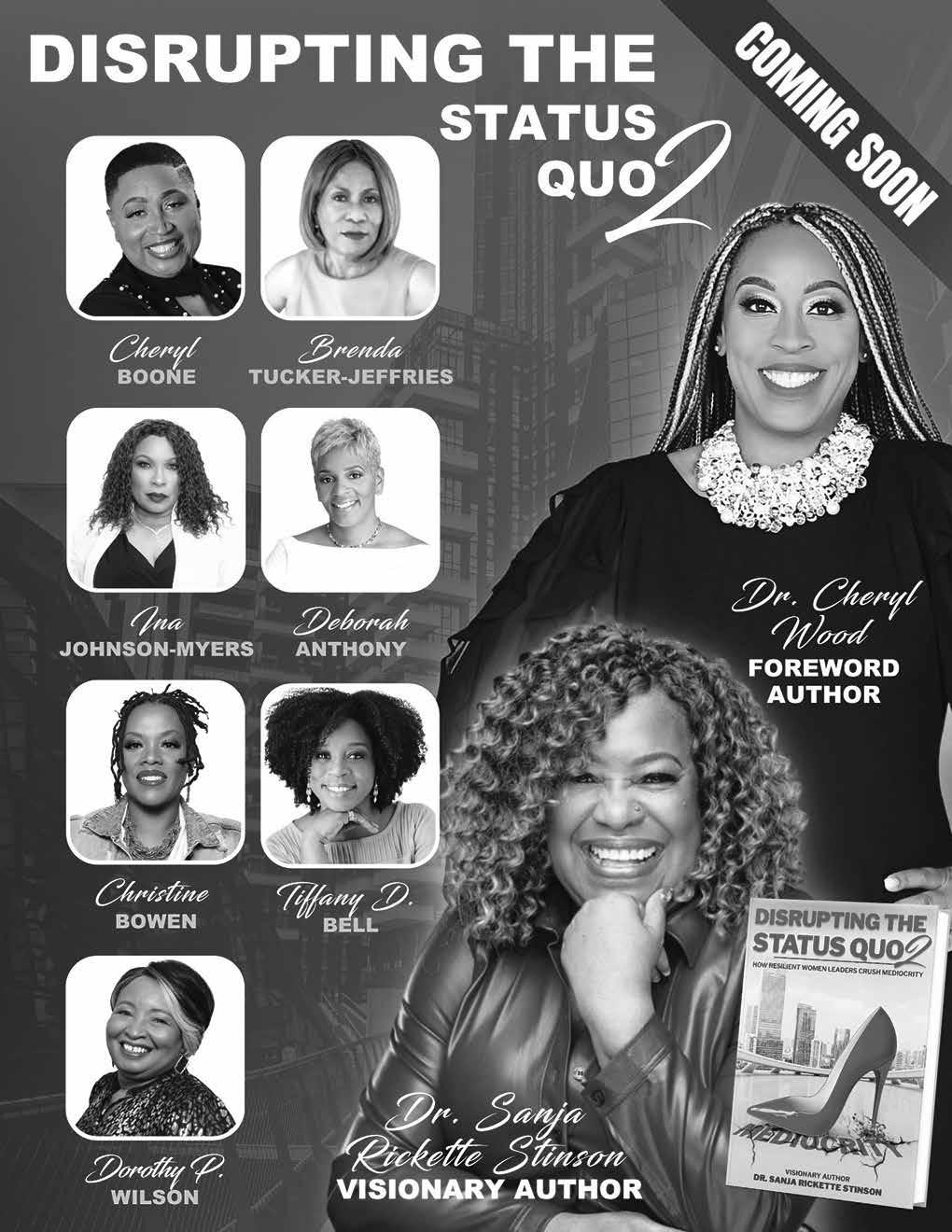
The Chicago Board of Elections Supersite (191 N. Clark) and the Chicago Board of Elections Office (69 W. Washington, 6th Floor) will be open for Early Voting through November 7, 2022.
From October 7 through October 30, these two sites will be open Weekdays from 9:00am to 6:00pm; Saturdays from 9:00am to 5:00pm; and Sundays from 10:00am to 4:00pm.
From October 31 through November 7, these two sites will be open Weekdays from 9:00am to 7:00pm; Saturdays from 9:00am to 5:00pm; and Sundays from 10:00am to 4:00pm.
On Election Day (Nov. 8), the Chicago Board of Elections Supersite (191 N. Clark) will be open from 6:00am to 7:00pm. The Board Office will not be open for voting on Election Day.
Early Voting in each of the 50 Wards in Chicago begins on October 24th through Novem ber 8th. These sites are open Weekdays from 9:00am to 6:00pm; Saturdays from 9:00am to 5:00pm; Sundays from 10:00am to 4:00pm; and on Election Day (Nov. 8) from 6:00am to 7:00pm. You can see all Early Voting locations and addresses by visiting https://www.chica goelections.gov/en/early-voting.html.

All voters in Chicago may vote at any of these sites, no matter where they live in the City. Voter registration services (new voters, name changes and address updates) will be provided at all Early Voting sites. Two forms of ID, one of which shows the voter’s current address, are needed to register for the first time or to file a name change or an address update.
Voters with questions may contact 312.269.7900 or email cboe@chicagoelections.gov.
 New Poll by WBEZ & Sun Times shows double digit lead for the incumbent
New Poll by WBEZ & Sun Times shows double digit lead for the incumbent
Democratic incumbents Gov. JB Pritzker and U.S. Sen. Tammy Duckworth are leading their opponents by double digits, with the governor also faring better than Republican candidate Darren Bailey on his own turf in downstate Illinois, a WBEZ/Chicago SunTimes poll found.
The findings ahead of the Nov. 8 election — and less than a week after a televised gubernatorial debate — aren’t completely rosy for Pritzker, however, also showing the Democratic incumbent still struggling to boost his favorability numbers. But Bailey’s approval ratings are even worse.
In the governor’s race, the poll found Pritzker lead ing Bailey 49% to 34%, with Libertarian Scott Schluter boasting 8% — with 9% of those polled still unde cided. When it comes to offering their opinions of the candidates, 46% held favorable views of Pritzker, 46% un favorable and 9% were unsure.
Unsurprisingly, Pritzker’s highest favorability numbers come from his overwhelmingly Democratic hometown of Chicago, where 70% hold a good opinion of him. In sub urban Cook County, that number slipped to 42% and to 41% in the collar counties.
But most strikingly, 37% of downstate voters polled viewed the Democratic governor from Chicago favorably. That’s five percentage points higher than Bailey’s favor ability numbers downstate, which the poll found was at 32%. Bailey’s highest marks came from suburban Cook County and the collar counties, where 34% of those polled said the downstate farmer and state senator was favorable.
Conducted Monday and Tuesday, the survey of 770 likely voters has an overall error margin of plus or minus 3.5 percentage points, but that margin widens when the results are broken down into small categories, including by region. But the overall direction of the numbers arguably reflects the state of the campaign.
“He [Pritzker] made that move to kind of define Bailey before Bailey could define himself to the general elector ate,” said Jim Williams, an analyst for Public Policy Poll ing, which conducted the WBEZ/Sun-Times poll. “It re ally painted Bailey the way that Pritzker wanted him to be painted, and that seems to have stuck.”
Williams called Bailey’s low favorability “striking” — with not a lot of time to gain traction, especially with vot ers more evenly split on the governor.
“To be over 50% unfavorable at this stage in the game is not great, and with Pritzker at parity, it makes it really hard for Bailey to be on the comeback,” Williams said.
The poll also found U.S. Sen. Tammy Duckworth lead ing her Republican opponent, Kathy Salvi, 50% to 36%, with 5% supporting Libertarian Bill Redpath and another 9% undecided.
The poll finds a definite partisan split, with 90% of Democrats saying they’d vote for Duckworth and 79% of Republicans supporting Salvi. Duckworth took the lead in independents polled, with 44% compared to 31% for Salvi.
CHICAGO — Mayor Lori E. Lightfoot, Chief Equity Officer Candace Moore, and Department of Cultural Affairs and Special Events (DCASE) Commissioner Erin Harkey announced the grantees of the Together We Heal Creative Place Pro gram, a $5.5 million investment in cre ative projects that promote racial healing and transformation in Chicago’s neigh borhoods. The program focuses particu larly on communities disproportionately impacted by the COVID-19 pandemic and systemic racism.
The announcement was made at the “Let’s Talk Healing, Chicago: The Year of Healing 2022 Summit” at Harold Washington Library on September 22. The summit is an integral part of the City’s Together We Heal initiative, which is framed by three pillars: reflect on our past, reclaim our present, and reimagine our future. “Let’s Talk Heal ing, Chicago” included policy presentations, performances from local artists, and interactive healing workshops led by community healing practitioners across various modalities: sound, food, mental health, data & research, and more.
“Racial healing and transformation are an essential part of our ability to recover from the COVID-19 pandemic and
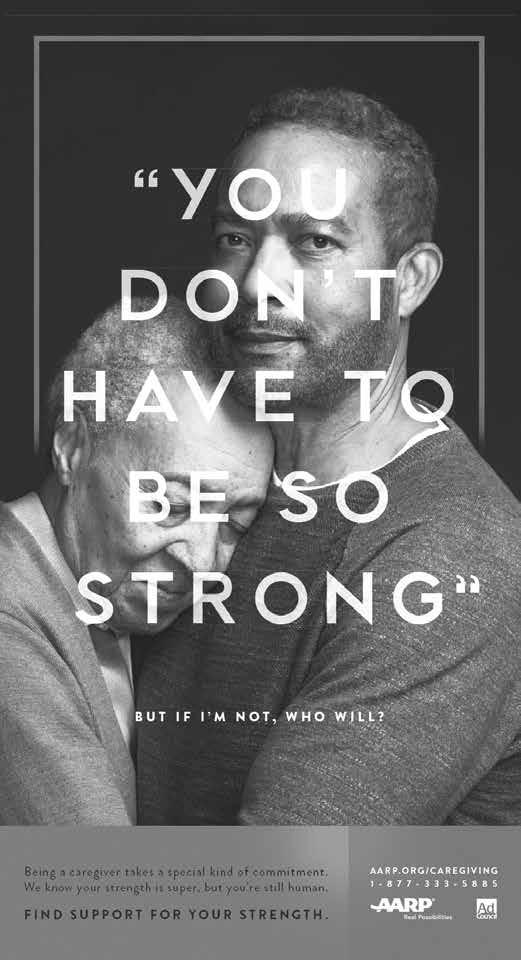
civil unrest of the past two years,” said Mayor Lightfoot. “I want to thank and congratulate our grantees for their vi sionary plans to create shared spaces for our communities to come together to heal and unite. These spaces give residents the opportunity to reflect on our past, reclaim our present, and reimagine our future.”
From Fall 2022 through Winter 2024, selected artists and organizations will work in partnership with stakeholders to
create projects that strengthen the economic, physical, and social character of a neighborhood or place. The 48 final ists were selected from more than 180 applications based on artistic merit, project feasibility, benefit to the community, community engagement experience, and connection to the Together We Heal guiding values.
“At the root of Together We Heal is the belief that be fore we can transform systems and structures, we must first transform ourselves,” said Candace Moore, Chief Equity Officer at the City of Chicago. “We look forward to the out comes of projects selected for the Creative Place Program, which has limitless potential to heal our community from the inside out and give way to sustainable solutions that will change lives for generations to come.”
“The Together We Heal Creative Place Program focuses on arts-based solutions, with the belief that creative works can play a significant role in addressing systemic inequities, act as a convener for dialogue, encourage problem-solving, and spur positive transformation in communities through out the city,” DCASE Commissioner Erin Harkey said at the summit. “Chicago’s arts landscape has been devastated by the pandemic, but the resilience of our talented artists and venues as Chicago’s cultural scene continues to safely reopen gives us renewed hope for better times ahead.”
For more information on the Year of Healing and the To gether We Heal Creative Place Program, visit chicago.gov/ TogetherWeHeal.
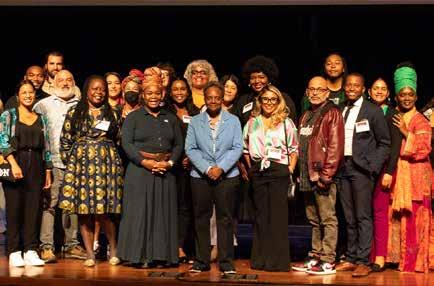
 By Stacy M Brown NNPA Sr. National Correspondent
By Stacy M Brown NNPA Sr. National Correspondent
NNPa NEWSWirE — “The United States Department of Agriculture (USDA) strongly supported the ARPA Section 1005 program and was ready to make payments to direct loan borrowers,” USDA officials said in a statement. “However, the $5 billion that was intended to help farmers was frozen by three nationwide injunctions that prevented USDA from getting payments out the door.”
The Biden administration said it has as much concern for the plight of Black and minority farmers as anyone else.
Officials responded after Attorney Ben Crump and the National Black Farmers Associa tion announced a lawsuit claiming the federal government breached its contract with socially disadvantaged farmers under the American Rescue Plan Act.
In August, Congress repealed section 1005 of the American Rescue Plan Act of 2021, which provided funding and authorization for the federal government to pay up to 120 per cent of direct and guaranteed loan outstanding balances as of January 1, 2021, for socially

disadvantaged farmers and ranchers, breaking the government’s promise and leaving farmers in foreclosure.
In the lawsuit announced on October 12, Black farmers said they relied on the federal govern ment to keep its promise to fund $5 billion to the farmers when it passed the American Rescue Plan Act (ARPA).
“The United States Department of Agriculture (USDA) strongly sup ported the ARPA Section 1005 program and was ready to make pay ments to direct loan borrowers,” USDA officials said in a statement.
“However, the $5 billion that was intended to help farmers was fro zen by three nationwide injunctions that prevented USDA from getting payments out the door.”
“The government vigorously defended this program in the courts, but the $5 billion provided in ARPA remained frozen because of these in junctions. This litigation would likely have not been resolved for years.”
Because of the leadership of senators, including Cory Booker (D-N.J.), Raphael Warnock (D-Ga.), Joe Manchin (D-W.V.), Charles Schumer (D-N.Y.), and Debbie Stabenow (D-Michigan), the Inflation Reduction Act moved to repeal those provisions and to craft some thing new, officials insisted.
They noted that Congress has provided $3.1 billion, allowing the USDA to work with distressed borrowers.
The move would help with their farm debts in “new and more effective ways to help keep borrowers as much as possible stay on the land, stay in agriculture, and maintain eligibility for future assistance.”
Additionally, officials said for farmers who suffered discrimination by the USDA farm loan programs, and Congress allocated $2.2 billion to provide additional financial assistance. We are moving aggressively to implement these provisions.
“I am excited that the Inflation Reduction Act clarifies and reappropriates this funding from the American Rescue Plan,” Booker said in an earlier statement.
“By giving USDA the authority to modify debt for distressed borrowers, we will keep fam ily farmers around the country on their farms. For those farmers, particularly Black farmers, who have suffered USDA discrimination, this legislation sets a process to right those wrongs in motion. This was a team effort with Senator Warnock, Senator Stabenow, Secretary Vil sack, and Leader Schumer. I plan to work closely with USDA to en sure farmers quickly get the support they have been waiting for and desperately need.”
In a later tweet, Booker said he’s proud that the Inflation Reduction Act contained more than $5 billion to enable thousands of struggling small farmers to stay on their land and provide financial assistance to Black farmers and others who have suffered from USDA discrimina tion.”
“This relief will be a lifeline for our farmers who are most at-risk of foreclosure or losing their land, as well as a boost to farmers who have been left behind for decades… [the aid] is significant for economically distressed farmers all across Georgia and the country,” added War nock.
Further, Willard Tillman, executive director of the Oklahoma Black Historical Research Project, Inc., said his organization was aware that including the provisions took tremendous energy and commitment to underserved producers.
“We further congratulate and thank Senator Manchin and Senator Chuck Schumer for including this support for farmers and local food systems in West Virginia and beyond, and for their dedication to get ting this historic bill assembled and passed and sent to the House of Representatives,” Tillman said in August.
USDA official and retired farmer Lloyd Wright also praised the ad ministration’s action.
“This is better than any of the other versions,” Wright stated.
“They’re going to have to do some paperwork to document the dis crimination that occurred, but we can work through that. So, I think it’s really going to help the Black community.”
Sara Vogel, former North Dakota Commissioner of Agriculture who led class action lawsuits against USDA in the 1980s, called the bill “comprehensive.”
“The bill is comprehensive, and it’s going to reach many borrowers in need of services or who had suffered discrimination in the past,” Vogel insisted.
Rudy Arredondo, the executive director of the National Latino Farm ers and Ranchers, also called the Inflation Reduction Act an example of the collective effort for a sustainable future and future generations.”
The Jan. 6 Committee has voted to subpoena former President Donald Trump as they investigate the riot on the US Capitol.
The unanimous vote marks an escalation in the committee’s efforts to obtain testimony from the former President, though at this late stage, it’s unlikely that Trump would comply with the subpoena – and the committee likely doesn’t have time for a lengthy court fight.
It’s rare but not without precedent for Congress to subpoena sitting and former presidents for testimony.
House Select Committee Char Bennie Thompson and Vice Chair Liz Cheney argued the committee needed to hear from Trump to tell the most complete story it can about the Jan. 6 riot.
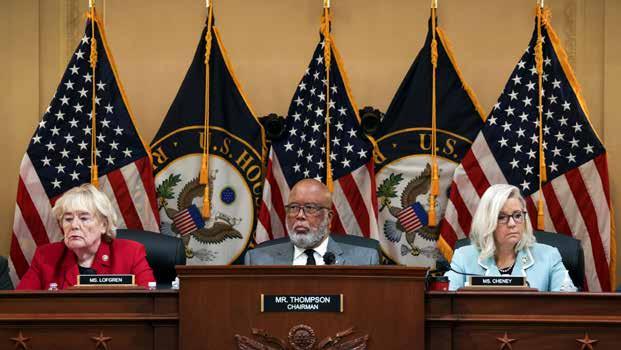
“Thanks to the tireless work of our members and investigators, we have left no doubt — none – that Donald Trump led an effort to upend American democracy that directly resulted in the violence of Jan. 6,” Thompson said. “He is the one person at the center of the story of what happened on Jan. 6. So we want to hear from him,” Thompson said.

Cheney said more than 30 witnesses have invoked their Fifth Amendment right against self-incrimination, including some who communicated with Trump. She noted that others, like Steve Bannon, have been held in contempt of Congress for refusing to testify – and Bannon was convicted after the Justice Department indicted him – but argued the committee couldn’t wait for the Justice Department to obtain information from those recalcitrant witnesses.
“At some point, the Department of Justice may well unearth the facts that these and other witnesses are currently concealing,” Cheney said. “But our duty today is to our country and our children and our Constitution. We are obligated to seek answers directly from the man who set this all in motion. And every American is entitled to the answers, so we can act now to protect our republic,” she said.
• The House committee investigating the Jan. 6 riot voted to subpoena former President Donald Trump during Thursday’s hearing to seek documents and his testimony.
• The committee argued in its final hearing before the midterm elections that Trump was directly involved in the bid to overturn the 2020 election, with the panel presenting new evidence he had a premeditated plan to declare victor y no matter the election result.
• The panel also showed never-before-seen footage of congressional leaders during the Jan. 6 riot as it detailed Trump’s inaction during the attack on the Capitol.
• While the panel can’t bring legal charges against Trump, its central mission has been to uncover through a series of public hearings the full scope of his unprecedented attempt to stop the transfer of power and lack of action during the riot.
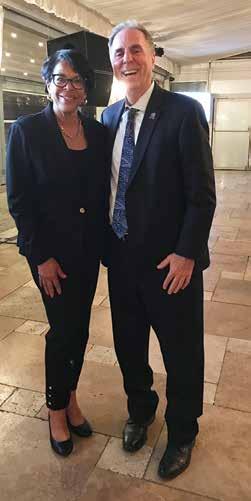
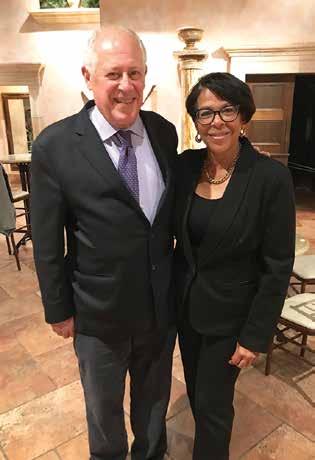

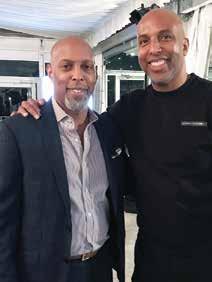

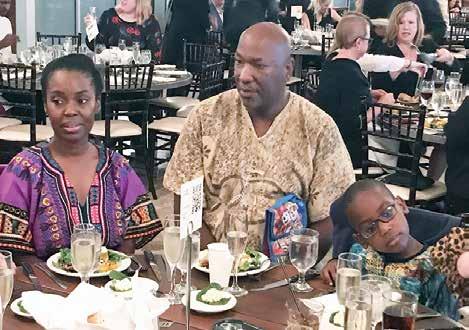
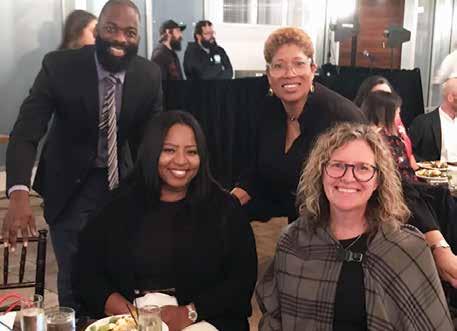
 Photos by CNW Staff
Photos by CNW Staff
On Friday, September 30, Streetwise celebrated its 30th Anniversary of its launch. This important publication provides jobs for homeless men and women as magazine vendors. Giving a hand up and opportunity to move forward where there is a great need is the mission of Streetwise, and the parent organization which is the YWCA of Metropolitan Chicago. Below are scenes from the event, which includ ed invited guests, vendors, board members and funders and friends of Streetwise. The event was held at Galleria Marchetti in River West.
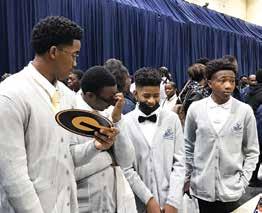

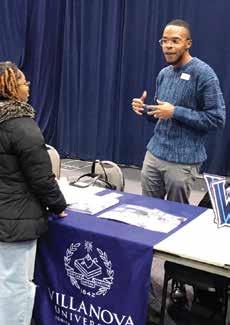
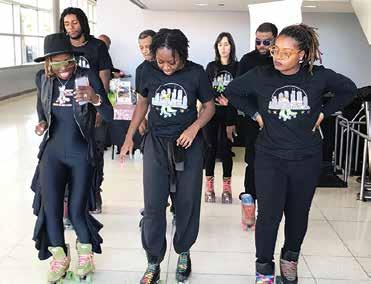

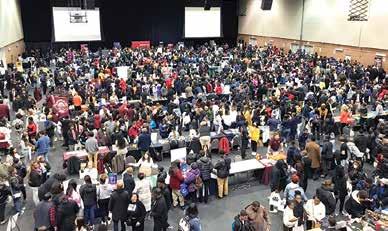
 Photos by CNW
Photos by CNW
Washington, DC: President Joe Biden announced his intent to “pardon of all prior Federal offenses of simple possession of marijuana.”

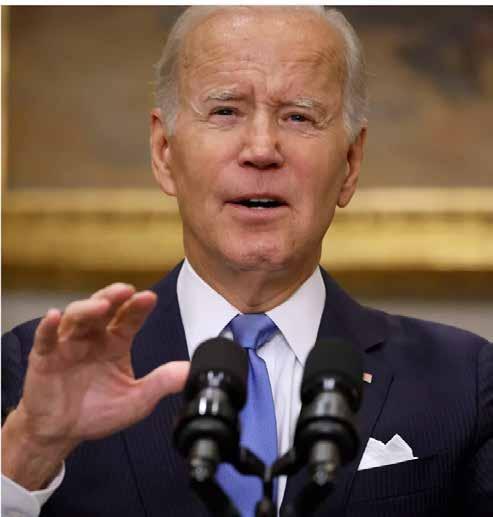
Cannabis includes industrial hemp, medical marijuana and adult use or sometimes referred to as recreational marijuana. The federal govern ment’s position on cannabis has been slow moving for many advocates, and confusing for other industry stakeholders. Federal and state legislation as well as county and mu nicipal ordinances can vary making it truly complex for growing a business no matter what part of the supply chain you are focused on or what cannabis commodity you are investing in. For some, decision makers don’t seem to be too passionate about federal legalization and for others cannabis is a flashlight illuminating conversations on bank ing access, voting rights, statehood, access to small business loans and legacy harms directed towards Black Farmers and Historically Black Colleges and Universities. Indeed recent federal pardons have resulted in a boost of confidence reflected in the stock market as well as accolades from the cannabis industry as progress. The trickle down impact of this confidence is sure to inspire decision makers at all levels to con sider how full federal legalization will both impact their economies as well as require addressing policies that impede equity in the industry. Yet, equity is a hard fought and the process to get to full legalization is not simple or fast.
Yes, Illinois was the eleventh state to legalize recreational sales and the first to do so by legislation in 2018. However, in 1978 the Cannabis Control Act was passed by the Illinois Legislature during the tenure of former Cook County State’s Attorney’s Office chief of the Department of Law Enforcement and Public Pro tection Governor James R. Thompson. This act sought to create a penalty system that made sense and allowed doctors to prescribe marijuana as medicine. The catch to this legislation was that two state agencies had to create their own new internal policies before maijuana could be prescribed and distributed. The Illinois Department of Human Services and the Illinois State Police Department did not advance such policies which stalled cannabis legislation for 35 years. In 2013 the State of Illinois approved the Compassionate Use of Medical Cannabis Pilot Program Act, yet this act does not have any of the equity components as does the adult use act creating pathways for entrepreneurship and resources for entering into the industry.
Illinois’ past politics have resulted in the extension of harm and displayed how policy can leave loopholes and create bottlenecks. The recent federal pardons show progress for those impacted by the War on Drugs, but most felony charges for marijuana possession are at the state level. President Biden did strongly en courage governor’s to take similar actions of expunging marijuana charges. This no doubt includes the arduous but necessary legislative work that will inherently look different for each state but hopefully have the same impact for disenfran chised populations. Let us hope this administration encourages the exact same equity lens for the 2023 U.S. Farm Bill for example. The previous bill’s language bars anyone convicted of a drug-related felony to participate in legalized hemp production for 10 years after their date of conviction. Prior to this language being added there was a proposed lifetime ban on engaging in hemp for any convicted felon of a drug charge.
Other parallel conversations include the fact that the District of Columbia has legalized medical marijuana usage but they currently don’t have statehood limiting their voting representation in Congress and their ability to advance an equitable, inclusive adult use marijuana program. Thirty four states won’t allow people on parole or pro bation to vote and in 12 states a felony conviction means never being able to vote again. Forty six percent of African Americans are unbanked or underbanked and Black owned small businesses in the past have been twice as likely to be denied access to a line of credit. Finally, new sources of state revenue and or federal dollars influenced by policy shifts can positively benefit HBCUs as well as programs for Black farmers who make up less than 2% of the population of American Farmers.
Advocates in states where marijuana is still illegal are often up against greater qualifi cation requirements to get on ballots or callous elected officials. It will not be easy to accomplish our cannabis equity goals at any level of government, and as is continuing to be shown by Illinois, it will take both time and solidarity. Cannabis is absolutely a powerful flashlight and there is much bias and inequity across government and within industries shadowing broader equity goals that need some light cast upon them.

Since 1985, October has been designated as Breast Cancer Aware ness Month. The pur pose of Breast Cancer Awareness Month is to raise aware ness about breast cancer and to raise funds to assist with continued screening and research efforts. The goal, as with all cancers, is to even tually find a cure. While there should never be a pause for breast cancer awareness, especially in the African American community, October is the month to ramp up efforts for breast cancer awareness.
Breast cancer is more prevalent globally in women than any other cancer and is the leading cause of cancer related deaths among women between the ages of 20-59. The statistics are startling. 1 in 8 women are expected to be at risk for breast cancer in the United States. While there have been advances in diagnosis and treatment of breast cancer, there has been an increase in breast cancer diagnoses in African American women. The mortality rate for African American women diagnosed with breast cancer is 42% higher than the mortality rate for white women. This year alone, it is expected that there will be approximately 224,000 new cancer diagnoses in African Americans and of these new cases close to 74,000 of these diagnoses will be fatal.
Lifestyle as well as social and economic factors are a large reason for the disparities. Af rican American women are exposed to carcinogens in beauty products, hair relaxers, and acrylic nail treatments. Additionally, African American women have increased incidences of diabetes, heart disease and obesity which all increase the risk for breast cancer. This does not include lack of access to health care and inadequate health insurance which affect the ability of African American women to receive early detection, proper screenings, follow up care and treatment.
Genetics also play a role in the increased incidences of African American women and breast cancer. African American women tend to be diagnosed with more aggressive types of cancer such as triple-negative breast cancer and inflammatory breast cancer. Younger African American women are more likely to be diagnosed with these more aggressive forms of breast cancer and die from the disease at a rate double that of white women with similar diagnoses. There has been a 43% decrease in breast cancer deaths within the past 30 years. This is mostly due to increased awareness, earlier diagnosis and treatment, however there is still a significant gap between fatalities among African American and white women.
There is hope. According to the National Cancer Institute, these disparities can be im proved. One suggestion is the creation of a statewide cancer screening program that makes accessibility to easier for underserved populations. Another improvement involves address ing the biological factors that create health disparities among racial and ethnic groups. Cities that have increased state of the art mammography services have seen a dramatic impact in reducing the mortality gap between African American and white women. Expanding access to clinical trials for African American women is another way to close the gap in disparities since most breast cancer clinical trials are conducted in white women.
African American women can also address the lifestyle choices that increase the risk of breast cancer. This includes the elimination of toxic hair and nail products that include carcinogens such as formaldehyde. Reduce the use of products with added fragrance. Many fragrance-related products contain diethyl phthalate (DEP) which has links to breast cancer. Check labels for chemicals of concern such as benzene, coal tar, coumarin, formaldehyde, fragrance, mercury, and other carcinogens.

Early detection can be lifesaving. Self-exams are important and can be key in saving lives, especially in younger African American women. Singer Normani recently shared how her mother was able to self diagnose not once but twice by conducting self-exams. Find out the best way to conduct a self-exam by asking a primary care physician or watching videos on reputable medical sites such as the Mayo Clinic’s website. Stay up to date on screening mam mograms and if there is a family history of breast cancer have a conversation with your pri mary care physician about starting mammography screening earlier. Take advantage of free screenings and resources offered in your local community. While the medical community is working toward advances in treatment and a cure, eliminating exposure to carcinogens can also be an additional life saving measure.
President Toni Preckwinkle is reminding residents that the Cook County Promise Guaranteed Income Pilot will be opening its application portal later this week. Eli gible Cook County residents will be able to apply for the pilot which began Thurs day, October 6 by visiting promisepilot.cookcountyil.gov. The application portal will remain open until October 21. There is no benefit to applying early; after the appli cation window closes, final participants will be selected at random.
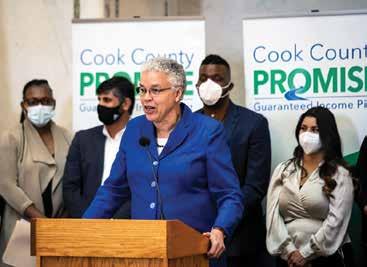
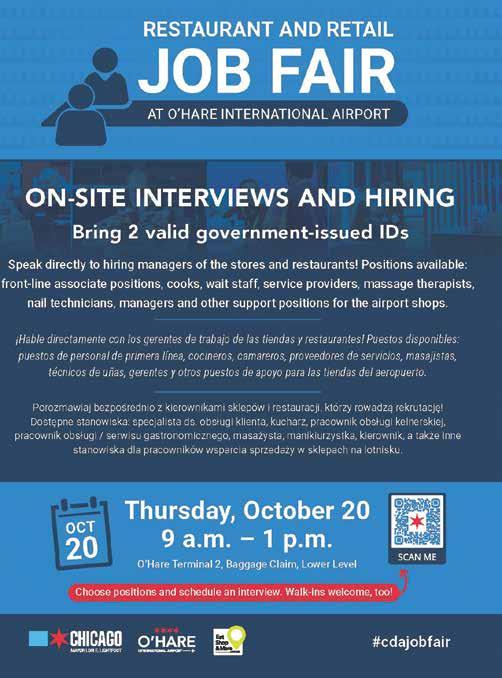
“After months of hard work, Cook County is proud to be launching the appli cation portal for the largest publicly-fund ed guaranteed income pilot in American his tory,” President Pre ckwinkle said. “We estimate that nearly 36% of Cook County residents will be eligi ble to participate, and I encourage everyone who meets the requirements to apply.”
Funded by the American Rescue Plan Act (ARPA), the $42 million Promise Pilot will send monthly payments of $500 to 3,250 residents for two years. Applicants must be at least 18 years of age, a resident of Cook County, and have a household income at or below 250% of the federal poverty level.
People who leave Cook County Jail on individ ual-recognizance bonds can be connected to affordable housing through a partnership an nounced today by the Chicago Low-Income Housing Trust Fund, The Bail Project and Lawndale Christian Legal Center.
A safe, stable home provides the foundation that many people need to break the cycle of arrest and incarceration.
Housing insecurity can lead to higher rates of arrest. In addi tion, housing is the most difficult social need to meet, given the financial cost associated with the number of people who need it and the amount of time they must have an affordable home until employment is secured and sustained.
Rental units will be available to people who have incomes at or below 30 percent of the area median income and who are released on individual-recognizance bonds after a bail hear ing in the Circuit Court of Cook County. People released on individual recognizance-bonds (known as “i-bonds”) do not have to pay any money to leave jail to reside in the commu nity while their case awaits trial.
Through this partnership, at least 50 clients of Lawndale Christian Legal Center (LCLC) will be eligible this year for rental assistance provided by the Chicago Low-Income Housing Trust Fund (CLIHTF). CLIHTF pays the major ity of monthly rents to landlords upfront in quarterly lump sums.

“The Chicago Low-Income Housing Trust Fund is hon ored to continue its work and serve as the Local Administer ing Agent for the City of Chicago’s funding allocations under the Illinois Rental Housing Support Program,” said CLIHTF Executive Director Annissa Lambirth-Garrett. “Through

our partner ship with com munity-based agencies and Chicago land lords, over 3,000 house holds benefit from rental as sistance.”
Landlords in terested in par ticipating may visit lclc.net/ housing to learn more.
“Many young men and women who we support often lack a stable home. We have worked with families who have 10 people living in a two-bedroom apartment. The children sleep in a closet. This leads to emotional distress in and out of the home, perpetuating the cycle of arrest and incarcer ation,” said Amy Campanelli, LCLC Vice President of Re storative Justice. “Providing our clients with a home will help them lead productive lives that their children will see every day. We appreciate the Chicago Low-Income Housing Trust Fund’s investment in family stability and violence prevention in Chicago.”
With the passage of the Pretrial Fairness Act in Illinois last year, cash bail will be eliminated statewide on January 1, 2023. To support this effort, The Bail Project invested $2.9 million in Chicago last December to pilot its national model – Community Release with Support – in collaboration
with Lawndale Chris tian Legal Center. The program links people coming out of jail to services for employ ment, housing, men tal health, substance use, violence preven tion, medical care and other social needs. It also supplements the court’s existing court-reminder ser vice with additional court reminders, and it provides free transportation services for clients to attend court dates.
“By this time next year, cash bail in Illinois will be a thing of the past. It is critical that we invest in people and com munities now to ensure the success of these reforms and address the root causes that drive crime and incarceration in the first place,” said Matthew McFarland, Project Director for Community Release with Support at The Bail Project.
“We are grateful to the Chicago Low-Income Housing Trust Fund for its commitment to being a part of the solution.”
Clients choose to opt into Community Release with Sup port, and LCLC staff meet with potential clients in the jail before their bail hearings to ask if they would like to engage in services. Referrals also come from the Law Office of the Cook County Public Defender and the Cook County Sher iff’s Office.
Ireally hate that I must come back again and again with the nonsense that we face as a people. But I am obligated to be relentless because the racists are. So, look, I was reading the Hollywood Reporter’s assessment of the Will Smith 2022 Oscars fiasco. It’s less than a year since the charismatic Will Smith slapped Chris Rock at Hollywood’s top awards show in front of everyone whose somebody in Hollywood and the whole world.
Let me tell you, I didn’t weigh in on it back then, but I will. So just hold on and let me set this scenario up. Here’s the sit uation, Apple will release Emancipation, in which Smith stars. Subsequently, the Hol lywood Reporter surveyed Academy mem bers and found that a majority weren’t willing to overlook the slap in the wake of the release of Emancipation in Decem ber. So real fast, though it may seem that Hollywood is personality driven, it is a busi ness driven by dollars and sense. Since Apple is the distributor of the most re cent Best Picture Oscar winner, releasing a film directed by Antoine Fuqua’s (who directed Denzel in his Best Actor Oscar win for Training Day), starring Oscar’s most recent Best Actor, Will Smith, it makes sense that they want their financial return.
Accordingly, here’s the first point. An actor’s performance is not tied to his per sonal behavior off the set and should not be factored in when judging his film per formance delivery. It’s as simple as that. We see this practice when it comes to white men in particular, for example Ro man Polansky, a noted film director of some great films was arrested and charged on March 10, 1977, in Los Angeles with six offenses against Samantha (née Gailey) Geimer, a 13-year-old girl –unlawful sexual intercourse with a minor, rape by use of drugs, perver sion, sodomy, a lewd and lascivious act upon a child under 14, and furnishing a controlled substance to a minor. At his arraignment, Polanski pleaded not guilty to all charges but later accepted a plea bargain whose terms included dismissal of the five more serious charges (even though the victim told all that had been done to her against her will) in exchange for a guilty plea to the lesser charge of engaging in unlawful sexual intercourse with a minor. Now there’s a lot to be said about that, but that’s not what this discussion is about.
We’re looking at how Polansky, Harvey Weinstein, Kevin Spacey and others are treated as Hollywood elite as are Will Smith and Bill Cosby, who are treated differently. Before Bill Cosby was charged and convicted of aggravated indecent assault in 2018, he had initially been charged with sexual assault allegations and the networks that were broadcasting “The Cosby Show” cancelled all of the reruns. Up until the allegations became public “The Cosby Show” was literally the most viewed and watched sitcom ever. It ran on several networks several times a day. Then just like that over night because of allegations the show was pulled from television.
Now do not be confused. This is not a pro Cosby, pro Will, Pro Weinstein or Spac ey. This is, however, a point like separation of ‘Church and State.’ The artist’s work for which they are judged is separate from their personal behavior. But here’s the greater point for us to exam. At no time was Polan sky’s, Weinstein or Spacey’s body of work pulled from public viewing. Their movies continued to be run on television and oth er platforms. There are lots of reasons why this makes sense. What about the other art ists, the ensemble of actors who made up the shows or the movies? You pull the work and their livelihoods are impacted. Why should they be punished because the network is no longer a Cosby fan? Well, they seemed to have understood that when it came to Polansky, Weinstein and Spacey.
Like the multiple award winning Cosby, during his career Polanski has received five Oscar nominations, winning, the Best Director in 2003 for The Pianist after he had committed the horrific crime against a minor. He has been allowed to live in France and Poland, a free man where he continues to make films. He’s never been jailed. None of his films have
Governor Gavin Newsome’s wife Jennifer Siebel and four other women in Los Angeles.
However, Weinstein, 70, is currently serving a 23-year pris on sentence following a conviction in New York. Weinstein was granted permission to take his appeal of his 2020 sex crime conviction to the New York State Court of Appeals. A complete list of 87 women cited allegations against him. And guess what, his movies have never been pulled by net works or streaming platforms.
Then there’s Kevin Spacey who goes to court this month where he faces a civil trial related to sexual assault allega tions levied against him by actor Anthony Rapp who in 2017 alleged that the Netflix’s House of Cards star assaulted him when he was 14. Since then, 30 men have come forth with accusations from nonconsensual groping to attempted rape of minors. And yes, Kevin was fired from his Netflix gig and scrubbed from film projects. But never was any of his previous work pulled from being viewed.
So, let’s get to Will Smith whose offense was by all means minor to any, discussed here and yet early this year when he slapped Chris rock who hasn’t been funny in years according to my 94- year old aunt Dolores Carr, people were talking out of their heads. I read Facebook postings where it was suggested that ‘his body of work be pulled and he not ever
ever been pulled from public viewing.
Bill Cosby had a stable of 60 women coming forth making accusations most of which were thrown out of court. In 2015, I actually interviewed Playboy bunnies who worked at the Playboy Mansion at the time that Cosby was a regular. The bunnies I spoke to shared, that Cosby was a magnate because of his growing popularity. The Bunnies were drawn to him because of possibility, a future in Hollywood and he was the key. “The thing back then,” one Bunny said, “was the culture of drugs, sex and alcohol, which was referred to as ‘Party.’ When you said ‘Let’s party,’ it meant quaaludes, other drugs, sex orgies and alcohol. Everybody knew that. And some of the girls were willing to indulge. It was not something that they were forced to do.”
Having said that, no pass is given here for rape, or drugging a person without their knowledge. Just stay focused. We’re talking about the culture of Hollywood and in this article the Academy Awards.
Now let’s look at Harvey Weinstein who was secretly in dicted on rape charges by a grand jury in Los Angeles. Why? Why was it secretly done in contrast to the highly publicized Cosby case?
As of October 13, 2022. Weinstein pleaded not guilty to 11 counts of rape and sexual assault involving California’s
be hired again.’ Seriously people? What’s going on? These were Black people saying such insensitive nonsense. What’s wrong with people?
What I knew to be true is that next the day after the Os car’s, Chris Rock and Will Smith would still be multi-million aires. And truth be told Chris has Will Smith to thank for the increase in his 2022 ticket sales. So, call it even, Chris. And everybody else go mind your own business.
Today, here we are a year later, and the Academy mem bers are talking about punishing Will Smith because of the 2022 Chris Rock slap, not because the acting performance isn’t worthy. And we won’t know until its released if he his performance is worthy. Still the fact that they’ve made up their minds that Will should not be considered for a Oscar because of the slap remains. Somehow that seems so pet ty since they had no issue voting for Roman Polanski ‘who raped and sodomized a 13-year-old girl and awarding him an Oscar. They never thought about not voting for him because his art was phenomenal. My point, “Keep the ART and the Personal Life Separate.
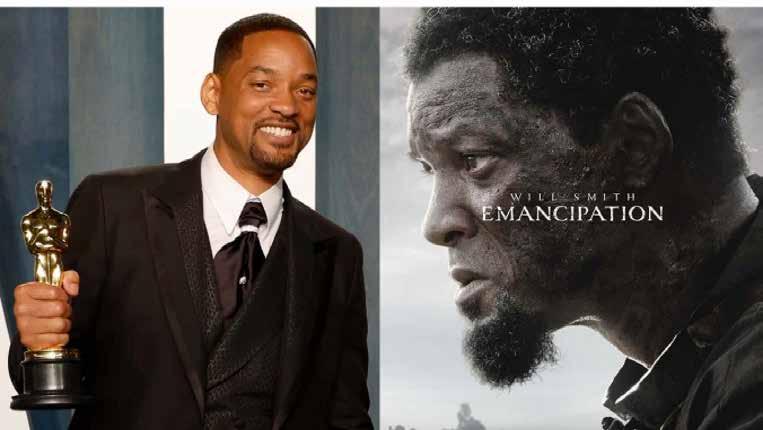
okay, so you saw the movie, King Richard, about the Williams girls and the scene when Ve nus was presented an endorsement deal before she won any major game, or the world knew her. But once the deal was negotiated, Ve nus Williams made headlines in all the mainstream newspa pers and other news outlets all over the world. At 15-yearsold she had signed a record eight-figure deal with Reebok.
So, how did she do it? She had been on the Tour for a few years and enjoyed some major results. Still, it was the Reebok mega-deal in 1995 that announced who she really was long before any of her Grand Slam triumphs.
It wasn’t long after that Serena Williams, the younger and more ambitious of the two, followed suit, and signed her first endorsement with Puma in 1997.
It’s important to acknowledge the power-broker mentali ty that both sisters demonstrate on the court and off. Both have gone on to sign greater and more lucrative deals over the course of their distinguished careers, and yet their ini tial endorsements tell another story. Is it an endearing sto ry of big sports brands taking a chance on two undeniably talented, if somewhat inexperienced, young female athletes and their insight in seizing an opportunity that could change their businesses as well as the Williams career forever?
The bet has always been on the male athletes. Look at Mi chael Jordan. ‘Air’ Jordans remain a major commodity even today and the collectable models sell for thousands a pair.
The 1995 deal that Venus had with Reebok was the firstof-its-kind for a female tennis player. The 15-yeqr old Amer ican, Venus Williams, was ranked No. 3 in the world and at the time she was on an upward trajectory; awarding her with a $12 million deal made sense. Did it?
Reebok saw it differently and made it make dollars & sense. By offering a lucrative deal to an African American female in a sport dominated by white male athletes, Reebok
managed to capture the imagination of a whole new demographic. They could see that Venus Wil liams held the key to the ‘new kingdom-here-theycome’ and Reebok want ed to hold that key.
The Williams Sisters brought their culture to the court dressed in bold and unconventional outfits which moved, touched, impressed, and inspired millions of young Black girls, boys, and children of all ethnicities around the world. This not only made her an instant icon, but Venus also put Reebok on the map.



But it was Serena, who took a giant step in the fashion world by taking a proactive interest in the design process of her on-court outfits that made the difference. Design ers at Puma, including Amy Denet Deal, in a recent feature for ‘The Undefeated,’ recalled a 17-year old Serena Williams bringing them sketches of ideas for outfits to creative meet ings; “You’re talking about someone who was 17 and had no training in design. She wanted to be the most powerful player. But this effortless sense of style that she’s developed over all these years — that was in her heart.”
Serena presented her sketches shortly after she had signed the deal with Puma which followed a marathon 12-hourlong negotiation meeting in 1997 which was brokered there with her father, Richard Williams.
“I wanted a sponsor. I wanted someone to believe in me,” Williams later wrote about her deal with Puma. “It wasn’t just Puma taking a chance on me. It was me taking a chance on Puma. It cut both ways.”
Antonio Bertone, who worked as a brand manager for Puma at the time, recalled meeting Serena and her father in the company’s LA office. He conceded that executives at Puma saw in the Williams sisters the potential “to change the sport.”
And just like that, the Williams Sister did, indeed, change the sport and sports fashion. Tennis is not the same. The look is different. It was once a very English, very stuffy, tight lipped and buttoned-up sport. Today this is not so. Leave it to those change agent African American Williams’ sisters!
The point is that Venus and Serena changed the game on so many levels. First, they are the best women tennis play ers yet. Two, the deal they brokered with Reebok and Puma set a new precedent for women athletes and especially fe male tennis players. The Williams Sisters, specifically, Serena put Puma back in the tennis game. And finally, three, they opened the doors for what’s happening today in the athletic shoe world athletic fashion for Black women.
In the 23-time Grand Slam winners’ own words, “things worked out well for both parties.”
amEricaN WomEN have been a consistent presence in the footwear industry since the early 1900s. With a focus on a sophisticated, sleek style, Black women are now recognized as one of the most influential and important demographics in the world of fashion. The last few years have seen an uptick in the number of Black women in the industry with more opportunities available than ever before. Companies such as Vans, Nike, and Adidas have made strides to include more African American models and designers in their campaigns. This was reflected during the COVID lockdown. Images of Black women dominated the pages of ELLE, Vogue and Bazaar Magazines.
The fashion industry is no stranger to diversity. However, not all ethnicities have ever been repre sented equally. In recent years, many designers have been making a conscious effort to revamp their brands to include more women of color. These stars in sports, music or fashion double as designers, trend leaders, and are representatives for many major brands. However, they are not always given the credit they deserve.
Black women are now taking over the footwear industry, with a number of them doubling as design ers and or trend leaders, and representatives for major brands. These women are being recognized and rewarded for their success in a gay male-dominated industry, and are representing the most influ ential brands in the fashion industry. What Black women are doing to change the fashion industry is by having their footprint everywhere throughout the footwear industry. Black women are becoming designers and trend leaders for major brands and are also taking on the role of the spokeswomen for these major brands. This shift in the fashion industry is a result of Black women’s willingness to step out of the shadows and into the spotlight. Black women have always been a powerful force in the fashion industry, yet were not credited with the trends they inspired, however, with the current climate, they are taking the lead. Many stars in sports, music or fashion have been able to work their way into the fashion industry. They are trend setters and have even been able to land major brands. Black women are no longer just the consumers of fashion who market the brands of top designers, they are now the designers, trend leaders, and face for major brands. With the increasing popularity of these women and the design of their shoes, that they create, the industry has been able to diversify and make more diverse shoes with a broader appeal.
It’s only right to recognize what’s become more than a trend in the footwear industry: Black women have taken over. And we’re not just talking about women’s-exclusive sneaker releases. At the helm of global sportswear companies, such as Nike, Adidas, Reebok, Puma, Converse and more, are Black women.

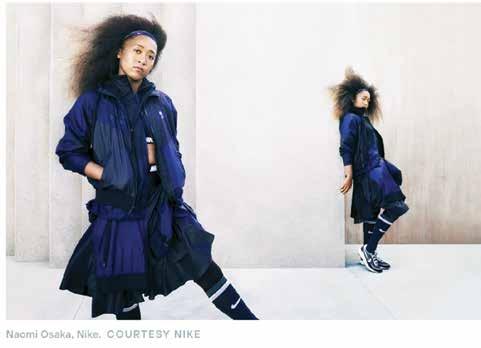
A recent study from the University of North Carolina at Chapel Hill showed that the number of Black women working in the footwear industry has increased by more than 500% in the last decade. Black women are now a reality in the fashion industry here to stay. They have always been an import ant factor in society, however, in recent years, their presence has become more prominent and influential in the de sign industry. The creativity and style of Black women has always played a prominent role in fashion society and now the world knows.
The following are some of the top female figures in footwear. Whether stars in sport, music or fashion, these women have made an incredible im pact on street style globally.
Leading the way are the phenomenal Williams sisters, who by the way are making it happen in the shoe world and are also designing athleisure wear and day wear in their individual collec tions.



It’s Game Time, and you want to get your grub on, whether it’s baseball finals, football or basketball Amer ica is tied to its sports. Chicagoans are known throughout the world as the home of the most loyal fans. The proof? Chicago Cub fans never fold. That’s who we are tried and true and we like to accompany our sports lust with hearty food and drink that keeps you satisfied. So if you’re not at the stadium and opt to watch the television at home try a little something light but filling.
It’s a quick and easy to make. Yep,it’s a new twist on an old favorite: Gucamole.
This guacamole is a great last minute dinner party appetizer, in part, because it’s so adaptable - you can use fresh or frozen peas, substitute lemon for lime juice, and spice it up however you’d like. All it takes is a a food processor and a few minutes of your time. Serve it with a variety of accompaniments - tortilla chips, whole grain crackers, even toasted crostini will do wonders for it.
Adapted from Food52
| Yield: 4 servings | Time: 10 minutes |
In a food processor pulse peas ginger and garlic until smooth and combined. Add cilantro, lime juice, avocados and pulse until creamy and mostly smooth. Season with salt and pepper and serve with corn chips.

1 cup green peas, fresh or thawed
1 small bunch cilantro
1 small piece of ginger, peeled and grated
1 lime, juiced
2 avocados, pitted
1 garlic clove Salt and pepper
fans of the NBC network television series “Chi cago Fire” may recognize him from being a “core extra,” an on-camera staple of the weekly show. However, Chris Vaughn has established notoriety for his work behind the camera as one of Chicago’s most notable photographers.
In the past year, he had his first solo exhibition and has been a part of two others. The photographer (and some times actor) is on a roll.
From as far back as he can remember, Vaughn has loved photography. To borrow an old phrase, he got it honest.
When he was a child, his father took photographs of fam ily and friends with an early version Polaroid Land camera, with the accordion front, “like you saw in old movies,” Vaughn said.
“He used to snap a shot, pull the photo, start the stop watch, time it for a minute. He peeled the paper back and there was a photo. I became fascinated with the process,” Vaughn received his first camera, a Kodak 110, when he was a kid.
By Phyllis D. Banks Staff Writerraphy. Vaughn started booking his own business shooting weddings, parties, events, etc.
He became a photographer in demand. A friend at ABC7 had him shoot at a crime scene, a murder suicide. He published some of the photos online, which brought more work.
When NATO was in Chicago in 2012, Vaughn was able to go as Press. He took pictures of Hillary Clinton, other heads of states and political dignitaries. One of his photos was used in a FOX 32 newscast.
His activity on social media attracted several digital plat forms who wanted him to do work also.
Angela Allen, director of the Noyes Cultural Arts Center Gallery in Evanston, also took notice. She invited him to develop a retrospective from his last 10 years chronicling social justice issues, i.e., labor marches, Black Lives Matter, anti-Trump protests and anti-Asian violence activism.

Originally COVID put the project on hold but, in Decem
“I took pictures all the time as a hobby, at parties and events. From then on “I was always the guy with the camera.”
Professionally, he worked initially in criminal justice and then in senior management for several nonprofits. During his free time, he enjoyed taking pictures, teaching himself the art of photography along the way, using light and dark ness, color and black and white; learning composition and depth of field, and loving every minute of it.
As it was for everyone, social media was the game changer for Vaughn. Instead of sharing photos with just friends and family, he began posting them on social media, especially Twitter, where he began to get much notice.

“I’m here in Chicago, the third largest city in the country, the jewel in the crown of the Mid west,” Vaughn said, so he had plenty to shoot – landscapes, architecture, individuals, events, street scenes.

However, he said, “Because there’s so much going on, I do a lot of social justice work.” And then he tweets all about it.
Thanks again to social media, his first paid job was for In These Times, a politically progres sive newspaper. The photo editor saw his work online.
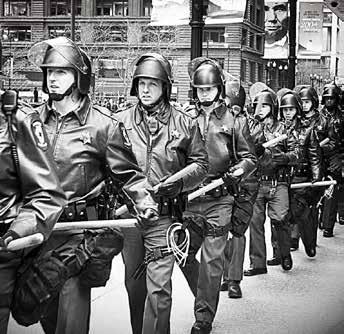
“They hired me back in the early 2000s to do a photo shoot of Lisa Yun Lee, the director of Hull House, a part of the University of Chicago.

Founded in the late 1800s, it was one of the first social work settlements in Chicago.”
He then began getting more and more work and shot for MarathonFoto capturing races, gaining experience in sports photography. They also shot high school and college graduation photos, hence his expertise in portrait photog
ber 2021, the exhibition opened and ran through February of this year. His work was also showcased in February in group exhibitions at The Martin and at the Dragonfly Gallery.
According to Vaughn, the shows allowed him to reach a wider audience.
“They gave me a greater appreciation of myself as an artist.
My participation in the shows under scored for me that photography is an artform to be taken as seriously as any other artform,” he said.
There is a lot happening in and around Chicago and Chicago News Weekly is here to let you know the when and where of it all!
Business owner and entrepreneur Norman Bolden has kicked off his Fall Con cert Series at Haven En tertainment Center this month. On select Thurs days from Oct. 6th through Dec. 15th, Haven will feature nationally known Chi cago talent. Featured performers scheduled are Javon Watson on Oct. 20th, and Meagan McMeal on Nov. 3rd. On Sunday, October 30th, Haven will present the soulful vocals of
By Marti Worell Staff Arts & Culture EditorMs. Terisa Griffin in concert! Doors open at 6:30pm on concert nights and guests can enjoy dinner and cocktails before the show at 8:00pm. Haven Entertainment Center is located at 932 E. 43rd St. in the Bronzeville neighborhood. Street parking is available. Visit CONCERTSERIESATHAVEN. EVENTBRITE.COM. for ticket information.

Check out Friday Night Jazz at The Quarry Event Center in the South Shore neighbor hood. Doors open at 6:00pm every Friday for dinner and drinks. Music sets are 7:00pm to 9:00pm. Guests enjoy some of Chicago’s best talent in jazz music. Known as “the Jewel of South Shore,” The Quarry is located at 2423 E. 75th St. The Quarry’s proprietor, Yvette Moyo, invites you to come out and enjoy their intimate setting, excellent food, fabulous live entertainment and mingling with a mature crowd. Tickets are $15.00 for online advance purchase and $20.00 at the door and parking is free. Visit #FridayNightJazzatTheQuarry.
mond, Indiana still has tickets available for The Whis pers, Jeffrey Osborne and The Dramatics this Friday, Oct. 14th as well as The Empress of Soul, Gladys Knight with Freddy Jackson next Friday, Oct. 21st. Act fast if you want to see either of these shows!


is an ex-convict. A dark comedy, the heart of the story is how the kitchen staff are working to take back their lives by working to create the perfect sandwich. This proves to be the thing that gives the each of them a sense of purpose and permission to dream despite the efforts of Clyde to oppress them and break their spirits. Clyde’s shows us how the smallest endeavor can be inspirational and transforma tive while teaching us that collaboration can be more fulfill ing than competition. Visit goodmantheatre.org for tickets
The Black Ensemble Theatre’s next production is sure to please serious Blues lovers! Blue Heaven, written and directed by Daryl Brooks, showcases the music of five of the most influential Blues musicians of the genre. In an apparent performance venue. four great legends of Blues music, Big Momma Thornton, Howlin’ Wolf, Muddy Waters and Stevie Ray Vaughn, are reminiscing about their careers while they wait for the “new guy” to arrive. The “new guy” arrives and its none other than B.B. King! Get ready for a Blues concert that will take you down memory lane and have you singing along with the performers. Blue Heaven runs Oct. 30th – Nov. 27th. Preview performances are Oct. 22, 23, 28 and 29. Visit blackensembletheater.org for tickets.
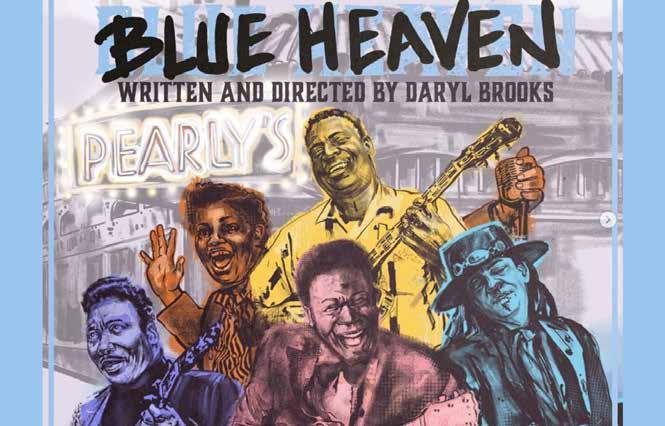
John Ruffin’s Theater 47 in Park Forest, IL, is running ‘Lady Sings The Blues Musical’ stageplay through Oct. 24th. Audience members are raving about the performanc es calling them “Phenomenal” and “Awesome”! ‘Lady Sings The Blues Musical’ closes on Oct. 23rd. It will be followed by an encore performance of the fan favorite ‘Living All Alone Phyllis Hyman Musical’ running from Nov. 12th –Dec. 11th. This production sold out the first time and this reporter is pretty certain it will again! Theatre 47 offers din ner and free parking as well as 4-5 star productions making it well worth the trip to the south suburbs. Visit theater47. com to get your tickets.
Chicago is blessed with a cornucopia of things to do, and Chicago News Weekly is here to keep you up on all of it!
Stay tuned!
In the mood for some classic Soul or R&B music? The Venue inside of the Horseshoe Casino in nearby Ham
The Goodman Theatre’s production of Clyde’s has been extended to October 16th! Written by African American Playwright and two-time Pulitzer Prize Winner, Lynn Not tage, Clyde’s takes the audience to a truck stop sandwich shop in Pennsylvania staffed by 4 ex-convicts and owned by a mean spirited, verbally abusive woman who herself

iN tHEatrES Here are some productions you still have time to see!
